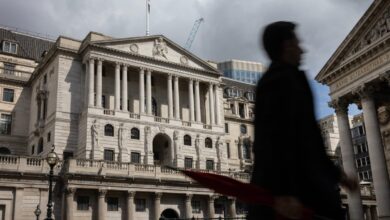Which artefacts have the British Museum been urged to return?

The British Museum was hit by a scandal worthy of an Edwardian crime novel this summer when it emerged that some 2,000 items from its world-class Towneley collection of Graeco-Roman artefacts were found to be missing, stolen or damaged.
Peter Higgs, a curator of 30 years’ experience and head of its Greece and Rome department, was dismissed over the disappearance of gold jewellery and semi-precious stones. He has since protested his innocence with his family insisting his name had been “dragged through the mud”.
Hartwig Fischer, the institution’s director, duly resigned over the affair, while his deputy, Jonathan Williams, voluntarily stepped back from his normal duties as the museum on Great Russell Street in Bloomsbury, central London, launched an independent review of its security arrangements.
The Metropolitan Police’s economic crime command also opened an investigation into the thefts and has begun conducting interviews connected to the spree.
Some of the missing relics have since been recovered, according to former chancellor of the exchequer George Osborne, chairman of the museum’s board of trustees.
A much more common complaint against the institution in recent years has revolved around its right to hold onto the treasures it houses, with some believing that many of the relics in its collection were effectively “looted” during the colonial heyday of the British Empire and ought to be returned to their countries of origin out of respect for the civilisations that created them.
The British Museum makes no secret of the debate surrounding the artefacts within its walls and lists “contested objects” on its website, explaining the historical circumstances of their acquisition and the current state of the often highly-sensitive discussions surrounding their retention.
A list of disputed items from its archives follows.
The most recent appeal for the museum to return items came from China’s state-run newspaper The Global Times, which used the visit of UK foreign secretary James Cleverly to Beijing in August 2023 to publish an editorial demanding that the institution give back all items “acquired through improper channels to China free of charge”.
It referred to Britain’s refusal to return artefacts to other countries and accused the museum in particular of ”adopting a resistant, protracted and perfunctory attitude”.
The British Museum houses the biggest collection of Chinese relics anywhere in the West – at least 23,000 objects – ranging from paintings that date back to the Tang dynasty (618 to 907) to bronze vessels from the dawn of China’s civilisation.
Of these, The Global Times reported that about 2,000 are currently on display and cited a number of examples it regarded as particularly significant. These included “The Admonitions of the Instructress to the Court Ladies” by Gu Kaizhi, which the museum describes as a “masterpiece” and “a milestone in Chinese painting history” dating from between 400 and 700.
Other items cited include Liao tri-colored Luohan statues; ritual bronzes from the Shang and Zhou dynasties and stone Buddhist sutra scrolls from the Wei and Jin dynasties.
A spokesperson for the British Museum told The Independent: “We understand and recognise the significance of the issues surrounding objects from other countries, and work with communities, colleagues and museums across the globe to share the collection as widely as possible.
“There has been no request for the return of any objects in the collection by the Chinese government.”
The Benin bronzes seen in a gallery of African relics in the British Museum in London
Egypt’s former antiquities minister Dr Zahi Hawass launched a petition in November 2022 calling for the museum to return the Rosetta Stone on the 200th anniversary of its hieroglyphics being deciphered. That breakthrough greatly enhanced the world’s understanding of the wonders of Ancient Egypt.
“It is the time Egyptian identity comes back home. We are not asking the British Museum to return the 100,000 Egyptian pieces they have, we just ask them to return one item,” Dr Hawass said.
The stone was discovered by French soldiers in the northern town of Rashid in 1799 during Napoleon Bonaparte’s military occupation of the country but passed into British hands after the general’s forces were routed in 1801.
Dr Hawass said he hopes to see the stone, which he described as “an icon of Egyptian identity”, displayed in the Grand Egyptian Museum in Giza once it opens in late 2023 or early 2024.
The Rosetta Stone on display as part of the museum’s recent ‘Hieroglyphs: Unlocking Ancient Egypt’ exhibition
Sections of the Parthenon sculptures on display in the British Museum





